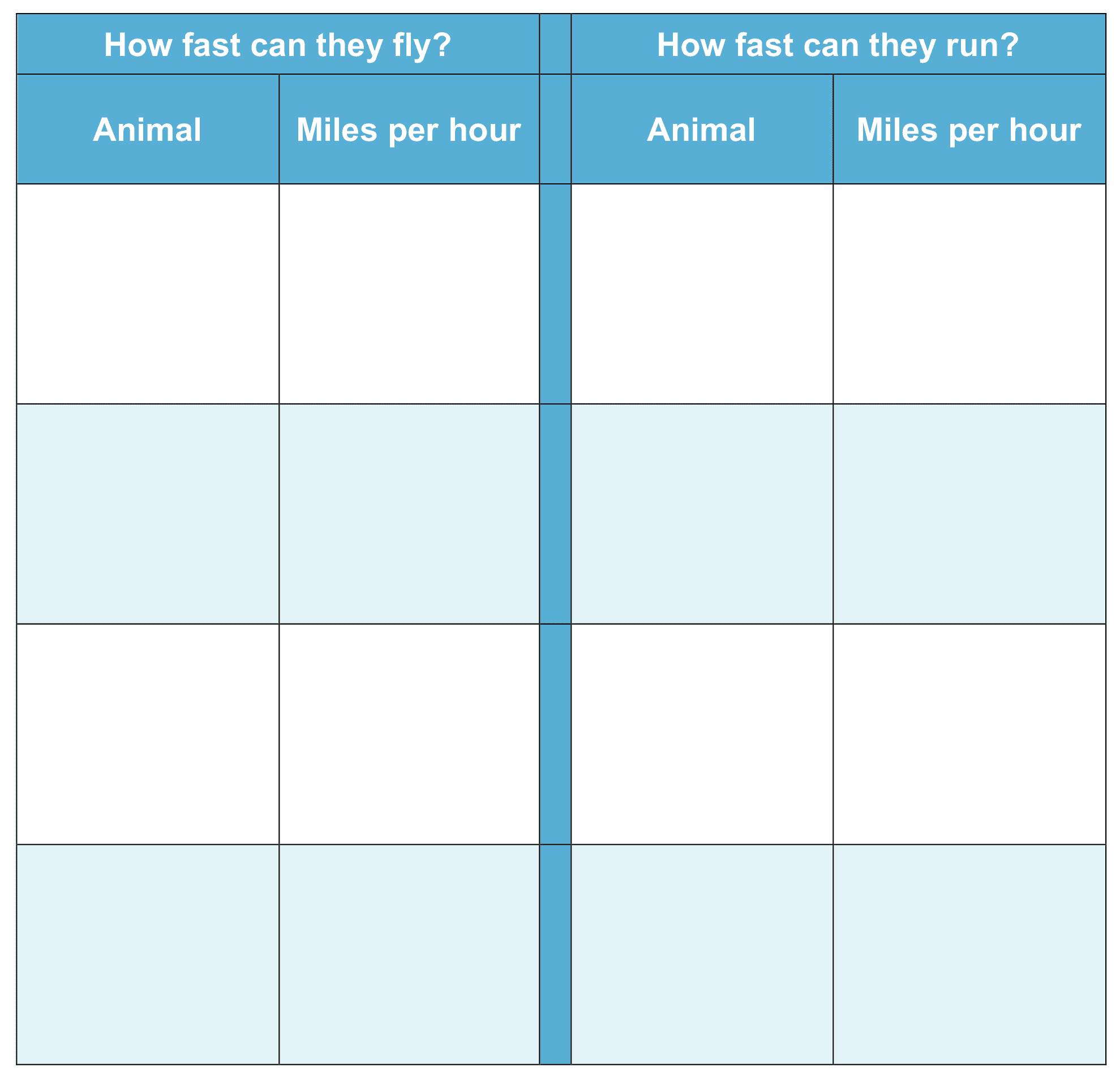Information for Teachers
Curriculum links
This investigation is linked to the following Grade 4 Next Generation Science Standards.
LS1.A: Structure and Function
Plants and animals have both internal and external structures that serve various functions in growth, survival, behavior, and reproduction. (4-LS1-1)
LS1.D: Information Processing
Different sense receptors are specialized for particular kinds of information, which may be then processed by the animal’s brain. Animals are able to use their perceptions and memories to guide their actions. (4-LS1-2)
ESS2.E: Biogeology
Living things affect the physical characteristics of their regions. (4-ESS2-1)
PS3.A: Definition of Energy
The faster a given object is moving, the more energy it possesses. (4-PS3-1)
Energy can be moved from place to place by moving objects or through sound, light, or electric currents. (4-PS3-2), (4-PS3-3)
How to search the internet
1 Keep your request short
Fewer words will give a more accurate search.
2 Choose exactly what you want
For example: Arctic Circle Climate
3 Use quotes
Double quotes around a set of words tell the search engine to consider those exact words in that exact order without any change. For example: “Arctic Circle Climate”
4 Use the plus sign (+)
If you add a plus sign (+) between words, the internet will search for all the words. For example: migrate+birds+whales+mammal
5 Use the minus sign (–) to say what you don’t want
Use a minus sign (–) to show words you do not want to appear in your results. For example: if you search for burrowing animals and do not want mammals in your search, –mammals will exclude mammals. Note that you need to put a space before the minus sign for the word to be excluded.
6 Be very clear about what you don’t want
Part 1
Ask questions and define problems
After reading Talented Animals, you may have many questions about the ways animals move, their special senses, how their bodies help them live, and how they use tools.
List your questions
- Compare your list with questions that others have.
- Choose a question you would like to investigate.
- You can work alone, with a partner, or in a small group.
You may want to choose one or more of these questions to investigate
Q1. Investigate the beaks of different birds. Find out about their size, shape, and what the birds use them for.
Q2. Compare the fastest runners or the longest jumpers or the fastest fliers or swimmers. How are these animals able to move so quickly and how does it help them?
Q3. Which animals have the most amazing senses? How do they use that sense? What amazes you about that?
Go to Part 2 Investigate →Part 2
Investigate
Helpful websites
You may want to use websites to help you’re your investigations.
You can use words like these in doing your search:
Guinness+world+records
longest+jumping+animals
fastest+flying+birds
Go to Part 3 Record data →Part 3
Record data
Find a way of recording your information that will allow you to see any patterns in the data.
Data Chart for the speed of animals
(Download and change to suit your information)
 Download Chart
Download Chart
Go to Part 4 Organize, analyze, and interpret data →
Part 4
Organize, analyze, and interpret data
1. Look over the information you have gathered and the patterns you have found.
Does any of this information surprise you?
2. Search for other patterns.
Which animals have the most amazing body parts that help them survive?
3. Make notes about what you find.
Go to Part 5 Present and share →Part 5
Present and share
Look over the information you have gathered in your investigation.
What are the most important talents that animals have to help them survive?
Make a chart showing the most important talents.
 Download Chart
Download Chart
← Return to menu